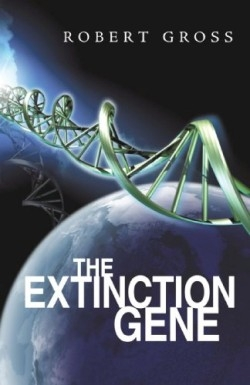The Extinction Gene
Global warming triggered a gene that caused the dinosaur extinction 60 million years ago, according to Nobel Prize winner Walter Perriman’s gene research. When Perriman finds that the same gene has been triggered again and is now active in homo sapiens, he sends his findings to a colleague, Dr. Allen Trevethan, and is promptly thrown under a bus—literally.
Thus begins Allen’s chase across continents as he attempts to verify Perriman’s research and save mankind. Allen and paleontology professor Kim Do, who worked closely with the murdered man, must find proof of the gene at the dig where Perriman worked, see that his research is not destroyed, and manage to stay alive long enough to do it.
The Extinction Gene is a fascinating journey across western Mongolia as the pair try to outrun a group of unknown assassins and reach the relative safety of China where an American acquaintance waits, they believe, to help them. Unusual characters, such as the Warlord, a descendant of Genghis Khan, and unusual settings, such as the Mongolian steppe, help to set the stage for a promising tale of scientific research that could doom or save mankind. Unfortunately, the title element’s prominence vanishes in the chase, and some of the most enticing story threads simply disappear.
Science aficionados will love parts of the book, such as when Allen find that one of the assassins—a trained commando—is carrying a TAK1 kit to treat radiation exposure, despite the fact that he knows of no radiation in the area of the dig. The work at the dig itself, recovering samples from fossils, is suspenseful and detailed, as is Allen’s eventual encounter with the source of radiation as they flee from the commandos.
An ending that is less than satisfactory detracts from an otherwise rousing tale. The writing is smooth and tight; for example, one character tells Allen and Kim, “‘There are some very big dogs fighting over your very small bones. Watch your backs.’” But lovers of action tales will be disappointed that evidence is spirited away by the “big dogs,” without a gratifying resolution. Additionally, typos in the copy detract from an otherwise clean text.
Still, this is a book that will make readers sit up and take notice.
Disclosure: This article is not an endorsement, but a review. The publisher of this book provided free copies of the book and paid a small fee to have their book reviewed by a professional reviewer. Foreword Reviews and Clarion Reviews make no guarantee that the publisher will receive a positive review. Foreword Magazine, Inc. is disclosing this in accordance with the Federal Trade Commission’s 16 CFR, Part 255.

